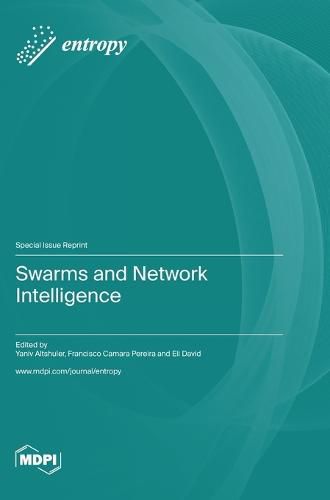Readings Newsletter
Become a Readings Member to make your shopping experience even easier.
Sign in or sign up for free!
You’re not far away from qualifying for FREE standard shipping within Australia
You’ve qualified for FREE standard shipping within Australia
The cart is loading…






This title is printed to order. This book may have been self-published. If so, we cannot guarantee the quality of the content. In the main most books will have gone through the editing process however some may not. We therefore suggest that you be aware of this before ordering this book. If in doubt check either the author or publisher’s details as we are unable to accept any returns unless they are faulty. Please contact us if you have any questions.
This reprint covers a wide range of topics related to collective intelligence, exploring the interplay between swarm intelligence, network intelligence, and other emerging technologies. The first set of chapters focuses on the behavior and mechanisms of swarming. One chapter describes a locust-inspired model of collective marching on rings, while another demonstrates the experimental validation of entropy-driven swarm exploration under sparsity constraints using sparse Bayesian learning. These studies provide new insights into the principles of swarming and its potential applications in fields such as robotics and mobile crowdsensing. The next set of chapters discusses the integration of swarm intelligence with other emerging technologies such as deep learning and graph theory. These studies show how swarm intelligence can be combined with other advanced technologies to solve complex problems and improve decision-making processes. The reprint also covers the topic of network intelligence, including the study of social network analysis, Twitter user activity, and crowd-sourced financial predictions. These studies provide insights into how network intelligence can be harnessed to understand social dynamics and improve decision-making processes in various domains. The reprint concludes with a chapter that proposes a generative design approach for the efficient mathematical modeling of complex systems.
$9.00 standard shipping within Australia
FREE standard shipping within Australia for orders over $100.00
Express & International shipping calculated at checkout
This title is printed to order. This book may have been self-published. If so, we cannot guarantee the quality of the content. In the main most books will have gone through the editing process however some may not. We therefore suggest that you be aware of this before ordering this book. If in doubt check either the author or publisher’s details as we are unable to accept any returns unless they are faulty. Please contact us if you have any questions.
This reprint covers a wide range of topics related to collective intelligence, exploring the interplay between swarm intelligence, network intelligence, and other emerging technologies. The first set of chapters focuses on the behavior and mechanisms of swarming. One chapter describes a locust-inspired model of collective marching on rings, while another demonstrates the experimental validation of entropy-driven swarm exploration under sparsity constraints using sparse Bayesian learning. These studies provide new insights into the principles of swarming and its potential applications in fields such as robotics and mobile crowdsensing. The next set of chapters discusses the integration of swarm intelligence with other emerging technologies such as deep learning and graph theory. These studies show how swarm intelligence can be combined with other advanced technologies to solve complex problems and improve decision-making processes. The reprint also covers the topic of network intelligence, including the study of social network analysis, Twitter user activity, and crowd-sourced financial predictions. These studies provide insights into how network intelligence can be harnessed to understand social dynamics and improve decision-making processes in various domains. The reprint concludes with a chapter that proposes a generative design approach for the efficient mathematical modeling of complex systems.